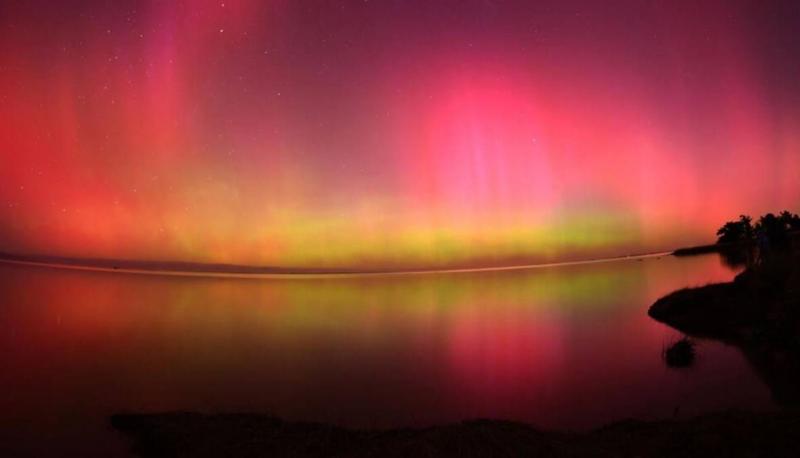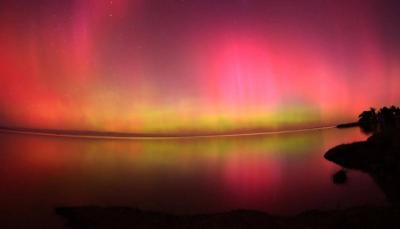On Monday, Earth experienced a strong geomagnetic storm, which the U.S. agency for ocean and atmosphere monitoring predicted would light up the skies of several countries with auroras. The agency reported indicators of a level 4 geomagnetic storm on a scale of 5, starting at 15:00 GMT. The agency stated that no further intensification of these indicators is expected, and they "may last until evening."
It clarified that a similar event "could lead to weak auroras appearing in Alabama and northern California." This new solar storm resulted from coronal mass ejections, which are explosions of particles emitted by the sun. When these particles reach Earth, they disrupt its magnetic field.
Éric Lagadec, an astrophysicist at the Côte d'Azur Observatory in France, wrote in a post on the platform "X": "There are a lot of auroras currently. If the storm continues until nightfall, we may be able to see some lights." NASA astronaut Matthew Dominick shared a stunning image of the auroras taken from the International Space Station where he is currently located on Sunday via "X."
However, geomagnetic storms can have negative effects, such as disrupting high-frequency communication systems, satellites, and power networks. In May, Earth experienced "severe" geomagnetic storms, the first of their kind since 2003, which illuminated the skies of the United States, Europe, and especially Australia with stunning auroras. This type of phenomenon has been increasing recently, as the sun is currently approaching its peak activity, based on an 11-year cycle.




